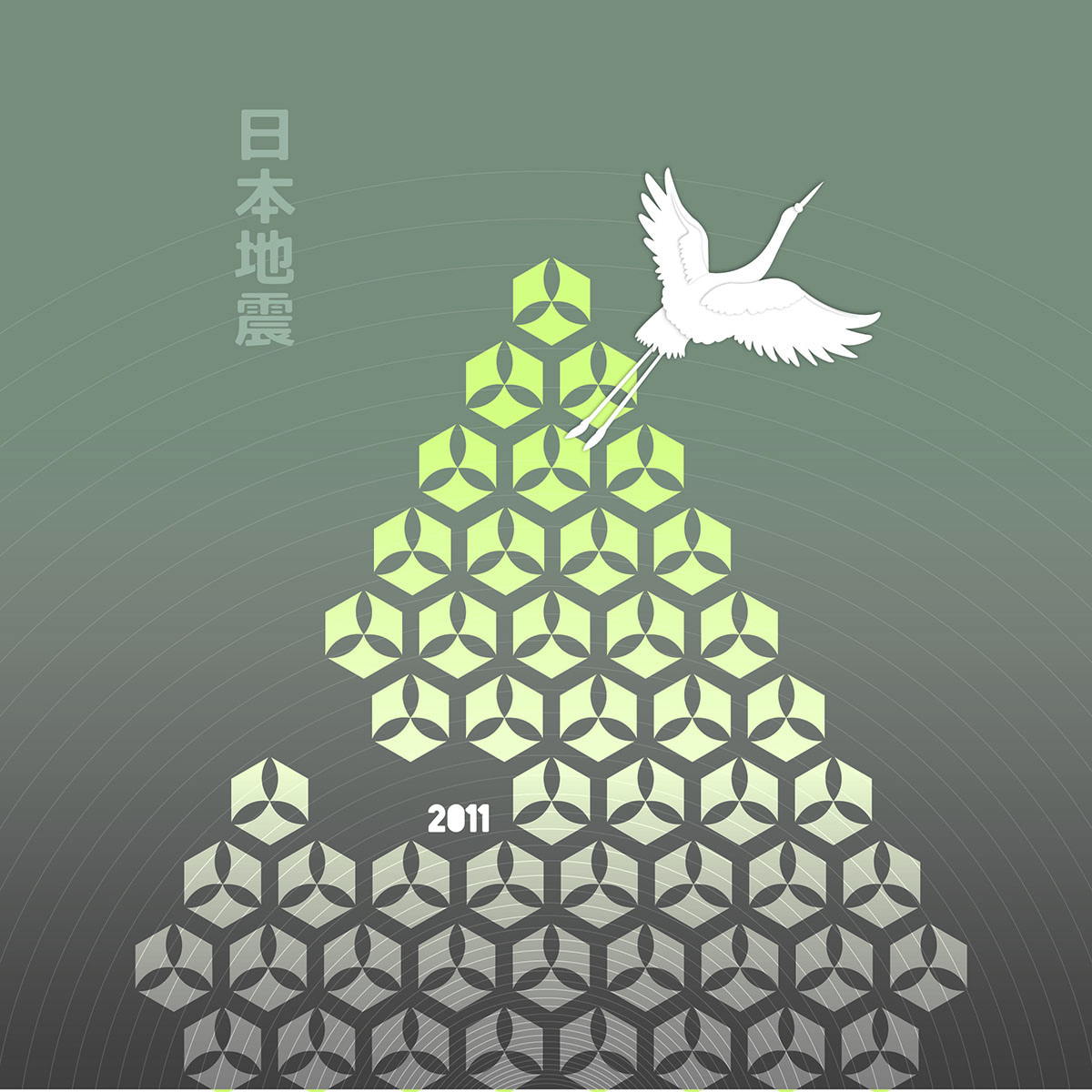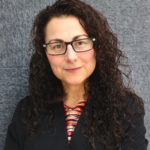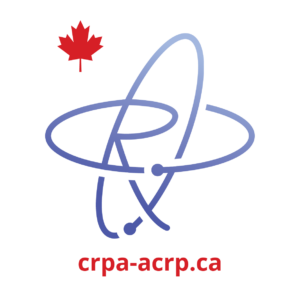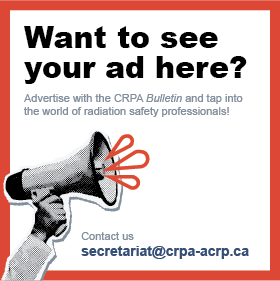From the Archives—Fukushima and Me

Japan Earthquake Poster no.3 by Linda Nakanishi
In this issue of the Bulletin, we’re introducing a new feature—From the Archives.
The online Bulletin has been available to the public since the fall of 2017, but for many years before that it was distributed exclusively to members of the association as a printed publication. There are some real gems from those early years that we think are worth revisiting and sharing with our growing online readership.
For our first “From the Archives” feature, we’ve pulled out a personal account from member Tanya Vlaskalin relating to questions she was asked following the Fukushima disaster, which we originally published in 2011. We thought it was timely given current public concern regarding the nuclear power plants in war-torn Ukraine.
There’s been a lot of speculation about potential impacts of the war in Ukraine on that country’s nuclear reactors, including Chernobyl. As radiation protection professionals, we experience this on a personal level by way of questions we are asked by friends and family members.
It’s impossible to note this level of concern regarding nuclear reactors and not think back to the events at Fukushima following the earthquake. The fall 2011 issue of the CRPA Bulletin was dedicated to Fukushima, so we went back to see what might still be relevant today.
Thankfully, there have so far been no nuclear emergencies as a result of the war in Ukraine, but with all the questions we’ve been hearing, Tanya’s article “Fukushima and Me” seemed very relevant to current events. We hope readers both old and new will find it useful.
From the Archives:
Vol 32 No 3
Fall / Automne 2011
Fukushima and Me
By Tanya Vlaskalin
Manager, EHS, Biological, Chemical and Radiological Risk, Toronto Metropolitan University (formerly Ryerson University)
(Note: When this article was published in 2011, Tanya was an RSO, Environmental Health & Safety Office, at the University of Toronto.)
It was a typical Thursday morning at the University of Toronto. The date: March 24. An email came to me from a professor—one I have had many dealings with in the past, and who has always been quick to address any concerns over non-compliances found during an inspection or site visit. But this email was not concerned with the radioisotopes in her lab, the workers under her supervision, her inventory records, or contamination monitoring results. This email was personal in nature and would require precise care and diplomacy when choosing the correct terminology for my response. This email was about the events at Fukushima.
On March 11, 2011, the most powerful earthquake ever to hit Japan, triggered destructive tsunami waves of up to 40 metres high. Among the devastation inland, survivors of the event (the Japanese people and their families, at home and abroad) witnessed the unfolding of a level 7 meltdown at the Fukushima Daiichi Nuclear Power Station. For a radiation safety professional, events of this magnitude are rare. Among all the publicity, the media hype, the stories, the facts, the daily updates, and the formulized hypothesis and opinions developing among the layman and the informed professionals, nothing prepares you for the moment when a scared non-radiation-safety-professional reaches out and seeks your knowledge and understanding during their most frightening hour.
So, my typical day as an RSO quickly turned into an atypical day as a radiation safety expert. I had never considered myself an expert at anything (well maybe at changing diapers while sleep deprived at 3:00 am), but after seven years of being an RSO at an academic institution, I finally had the opportunity to put my training to use for purposes “non-work-related” without escalating the concern of someone above me. But first, I did what every brave individual who questions their knowledge does . . . I talked to a more experienced expert. I also got approval from my supervisor to make the statements and judgments that I planned to make. After all, you don’t want to advise on a matter that later turns out to be completely false or misleading.
With permission from the author, an excerpt:
Hi Tanya,
I am just writing this e-mail to ask you something about radiation . . . there are some contamination of I-131 in tap water in Tokyo and people worry about it a lot. My brother is living there and have two infants, and I started to worry about it a lot.
Tanya, I just would like to know about guideline of the water contamination. Seems like it is a bit confusing situation in Japan. They found 200Bq in the water. I want to know if the safety guideline is different between Japan, Canada or EU. And how can I interpret this number based on these guidelines.
My sister-in-law seems quite stressed out about the situation and I would like to have some scientific view about the current situation.
Sorry to ask you such thing, but I thought you are the best person to ask.
When someone tells you that they think you are the best person to answer their question when they are concerned, you step up your game and give them the facts, with a side serving of humility and sympathy. After much careful consideration and within a timely manner (i.e., almost immediately), I replied (excerpts only):
I am sorry for your country’s disastrous earthquake and for you and your family’s ongoing fears and loss . . . I can understand your concern and that of your family.
The safety guidelines in Canada and Japan are very similar. In most countries, including Canada, the guidelines for radionuclides in drinking water are set based on recommendations from the International Commission on Radiological Protection (ICRP) and the World Health Organization (WHO) . . .
The first thing that everyone must understand is that we are already exposed to natural radiation and there are natural sources of radioisotopes in our drinking water. Drinking water is monitored to ensure “elevated levels” are caught early to minimize those levels before they reach any significant levels that can cause alarm or harm . . . If we look at the exposure limits for I-131 based on the Canadian government’s recommended levels, we can make some simple calculations to try and understand what the harm could be (if any).
Basically, an ingestion of I-131 of 9×105 Bq will give you an effective dose of 20 mSv (the annual limit of intake for any isotope based on CAN standards). If you recall from your training, this is a very low effective dose, and the first clinical effects that can be observed related to radiation sickness, like small blood chemistry changes, start at a dose of 250mSv.
The international guidelines equate the amount of drinking water that we are ingesting on a daily bases to be 2 L on average. I am assuming the value that they are reporting in Japan, 200Bq, is per litre. What we can estimate, for example, is this:
2 L x 200 Bq x 10 days = 4,000 Bq
Knowing how many Bq give us 20 mSv, we can calculate that 4,000 Bq would give an effective dose to the whole body of approximately 0.09 mSv . . . We estimate 10 days, but I-131 has a half life of 8 days, meaning the levels of I-131 are constantly dropping within the drinking water. So this is a very conservative estimate that also takes into account water from other food sources, like milk and water in our solid food/meats, etc. Also, children drink much less than this.
I went on to define “screening parameters” from different guideline reference levels, and explained some of the methodologies behind the recommendations. But the key to my advice was relating the meaning behind the numbers on an effects basis:
When daily intakes range between one hundred to a few hundred Bq, this corresponds to an annual effective dose in the range of one to a few mSv (ICRP 111). To get some perspective on the numbers, I am giving you the information from the numbers obtained from safety guidelines proposed by ICRP. The excess lifetime risk from a single exposure to 1 mSv has been estimated to be 7.3 × 10-5 (ICRP, 1991a), or 1 in 14,000. This level of risk includes outcomes such as fatal cancer, severe hereditary effects, and non-fatal cancers. For a lifetime exposure of 1 mSv per year over 70 years, the total risk would be about 0.005% (ICRP, 1991b). The current incidence of cancer in Canada is one in four, so this limit (1 mSv) is extremely conservative, and it is the same in Japan.
And like all good experts, I had to relate my information to something the individual I was speaking to already understands about the subject:
Remember, 200 Bq is equivalent to 0.005 microcuries. When you buy P-32, you are receiving 250 microcuries in 25 microlitres. That’s a lot more hazardous, plus you are directly handling it with your hands, and I-131 has a beta energy three times less than P-32. Yes, it has a moderate gamma energy, but luckily it is decaying quickly.
Finally, reassurance must come from the expert. Showing care and sincerity go a long way:
I hope you can find some comfort in the fact that most nuclear experts believe the concern to the public, especially outside the evacuation zone, is small . . .
Please feel free to call me. I can give you links to other good websites. Understand that all the international commissions and organizations with the top nuclear experts are keeping watch on the nuclear situation in Daiichi . . .
The Japanese government is really doing a good job. They are taking many precautions and really focusing on their people.
This was my most memorable experience regarding the events at Fukushima. There have been many discussions had with close friends and colleagues regarding these events, and my opinion has been valued. But this particular case, so personal in nature, finally made me take notice of the position I hold among my peers who see me as a knowledgeable “expert” on radiation protection, and radiation physics itself.
I have followed up with this professor since March 24. When I look back and reflect on our most recent casual interaction, I know the grey cloud is lifting from Fukushima prefecture:
Hi Tanya,
I appreciate you a lot for giving the specialist’s perspective to me and my family.
I actually am going to Japan tomorrow and can meet my family.
 Tanya Vlaskalin
Tanya Vlaskalin
Tanya Vlaskalin has an undergraduate degree in biological sciences from the University of Toronto and a graduate degree in molecular medicine from Ottawa University. She worked as an RSO with the Environmental Health and Safety office at the University of Toronto from 2012 to 2017, when she moved to Ryerson University (now Toronto Metropolitan University). She is currently the manager, EHS, Biological, Chemical and Radiological Risk, at Toronto Metropolitan University. She has been a CRPA member since 2004 and was the association’s president in 2015–16. She passed her CRPA(R) exam in 2007.
Other places to find information about the safety of nuclear reactors in Ukraine:One of CRPA’s corporate members has provided some expert advice, which they have shared on their blog. The Radiation Safety Institute of Canada, published a post in early March 2022 called, “Ukrainian Nuclear Power Plants in the War Zone: Should Canadians be Concerned?” The piece talks about whether Canadians should be concerned about power plants in the war zone.
You might also be interested in one of several interviews the president and CEO of the Canadian Nuclear Safety Commission, Rumina Velshi, gave with Canadian media outlets, including this one with CBC.
Do you want to read more articles like this?
The Bulletin is published by the Canadian Radiation Protection Association (CRPA). It’s a must-read publication for radiation protection professionals in Canada. The editorial content delivers the insights, information, advice, and valuable solutions that radiation protection professionals need to stay at the forefront of their profession.
Sign up today and we’ll send you an email each time a new edition goes live. In between issues, check back often for updates and new articles.
Don’t miss an issue. Subscribe now!
Subscribe

 Tanya Vlaskalin
Tanya Vlaskalin
